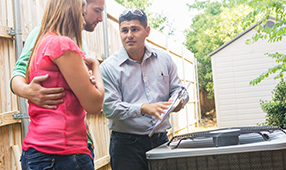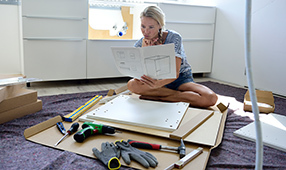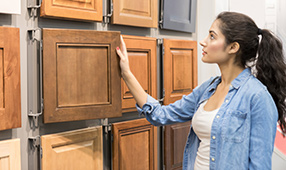In a certain sense, appliances are like cars: Many of us like to keep ‘em runnin’ forever. But there are times when your refrigerator or washer doesn’t quite work the way it used to. In this case, there are generally three directions to take—fix it yourself, hire a repair technician or replace the appliance. Here’s some helpful guidance/advice about the three options.
When to fix it yourself
No matter which direction you end up taking, you can start by trying to diagnose the problem yourself. The internet is full of great resources to do so, such as RepairClinic.com, Acmehowto.comandDoityourself.com. There are also tons of videos on YouTube.comto cover a wide range of appliance issues.
Once you figured out the situation, you may find that fixing it yourself is easier than you think. Chris Zeisler, master service technician at RepairClinic.com, says that if you know how to use a wrench and other basic tools, fixing the appliance yourself may be the best and cheapest option. The aforementioned online resources often offer step-by-step guides. Just make sure that the link/video you’re using matches the appliance you’re attempting to repair.
When to hire a pro to repair it
Even if you are handy with tools, there are times when you should call in a professional. For starters, the fix could require skills beyond your comfort level. Or they may involve electrical work, which should only be conducted by a licensed professional. The Association of Home Appliance Manufacturers (AHAM) also notes that, if DIYers attempt to fix their own appliance, they could void the warranty. So you should to make sure you’re on safe ground here.
Everyone wants to make the “right” decision when an appliance breaks down—the decision that makes the most economical sense. As it turns out, finding the right answer is not as agonizing as you might expect. If you can do a little troubleshooting and a little math, you’ll find the right answer to your appliance conundrum in a snap.
When to replace it entirely
RepairClinic.com’s Zeisler offers a good general rule of thumb for making this decision: If the cost to repair an appliance is about half the cost of replacing the appliance, you should consider the latter option.
Here are a few additional tips to help you figure out the true cost replacing or repairing:
- Is there a delivery/removal/installation fee? If you buy a new appliance, you may have to pay for removal of the old appliance and/or delivery of the new one, so add that to the total. Some appliance retailers will remove your old appliance and deliver the new one for free as part of the sale. (If the seller doesn’t offer such a deal, ask for it!) There can also be an extra installation charges for appliances that use water, such as refrigerators, or ones that require more work to install, such as over-the-range microwaves. Check the store’s policies before you buy.
- If your appliance has a warranty, does it cover labor? Zeisler says that if your appliance is still covered by a partial or limited warranty—but it only covers the cost of the parts—you’ll still have to add up labor costs to see if it’s still worth repairing the appliance rather than replacing it. If you have a warranty that covers both parts and labor, then a simple repair could make more sense. Some warranties even cover a full replacement of the appliance.
- Would replacing significantly reduce energy costs? In this era of green technology, you’ll definitely want to factor in how much a new energy-saving appliance can save you vs. repairing your current model. Also, new appliances tend to have much lower operating costs than older appliances. Replacing an 8-year-old clothes washer with an Energy Star model can save up to $135 per year, according to AHAM. So factor those kinds of numbers into your repair/replace decision.
- How old is your current appliance? If it’s pushing 10 or 15 years, you’re probably better off replacing it, preferably with a green model if one is available.
With this advice, you’ll find it much easier to make the right decision. All it takes is a little bit of research and troubleshooting, and you’ll have your appliance (whether it’s your current one or a new product) in tip-top shape.












